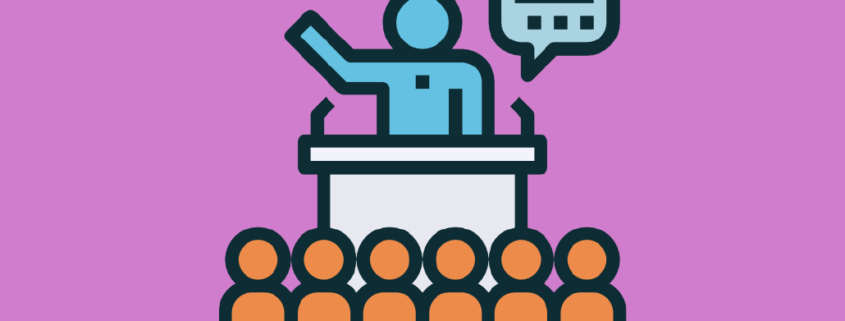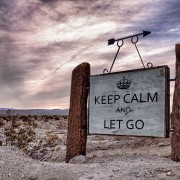Get The Most Out Of A Conference: Part 1
It’s conference season! Time to throw off the shackles of your desk environment and go to a place where everybody knows your name (because it’s printed on your lanyard) and they’re always glad you came (because you paid out the nose for it).
Maybe you’ll be attending pre-conference workshops, cocktail hours, dinners, and concerts. Or maybe you’ll have a chance run-in with an industry thought leader. And then there’s the swag, all that awesome, eye-pleasing gear that helps you justify–just a little bit–that hefty registration fee.
And are you staying at the conference hotel? If so, then hold on to your briefcase, because it’s like spring break meets summer camp meets college dorm…for professionals! Woo-hoo! …maybe that’s just my past conference experience.
In any case, a lot of excitement surrounds conferences, and it’s very easy to get caught up in it. But as most veteran conference goers know, it’s important to balance fun and work. Here is the first part in a two-part series on how to ensure that you get the most out of your conference.
Have a Plan
About a week or so before the conference, take a look at the schedule of conference speakers and events. It’s probably part of your welcome email, but also visit the conference website to check for any late changes. With an updated agenda in front of you, it’s now time to decide how you will spend your time at the conference.
First off, it’s a good idea to review the agenda with your supervisor and colleagues. If you’re attending the conference with them, then you can “divide and conquer” the sessions. If you’re going solo, then their input will help you create a schedule that brings value to both you and the organization.
In addition to creating a schedule of sessions, you should have objectives for each session. So if you are attending a session on “How To Enhance Employee Onboarding”, an objective might be: to learn how to improve coordination of onboarding activities among staff. This doesn’t mean that you might not discover other important takeaways, but it focuses your attention on how the content can help your organization today. If a speaker doesn’t address your objective, then it becomes your question for the Q&A or a follow up tweet.
Finally, outside of the sessions, be sure to schedule time for professional networking. This time should also have an objective, like scheduling time to:
- Make new connections
- Maintain existing connections
- Meet current clients or customers
By planning out your time and attaching objectives to it, you can avoid wasting any time and quickly begin to gain real value from the conference.
Have a System
Much like planning your schedule for the conference, having a system in place for gathering and storing information is invaluable. Sure, you could walk into the hall with just your smartphone, grab a swaggy notepad and pen, and survive the day. But you want to get the most out of the conference!
For Notes
Whether you decide to go digital or keep it low tech with a notebook, there is a lot you can do before the conference to make it easy to gather and organize the flood of content you will receive.
Start by creating a page for each session–if you’re taking notes the right way, one page should be enough, but go ahead and use two if you must. For each page, write the title of the presentation, time and date, and speaker’s name. Then write your objectives for the session.
These easy, proactive steps save you time, reduce stress, and help you stay focused on the speaker and your pre-determined objectives. Apps like Evernote, OneNote, and a host of others can also be set up in this way.
For Business Cards
Reports on the death of business cards have been greatly exaggerated. Despite the popularity of LinkedIn and apps for paperless sharing of your contact info, the business card endures. That’s good news for printers and the manufacturers of business card holders, but it’s bad news for people like me who always seem to forget and misplace them.
If you use a portfolio binder, then the solution is easy. Just use the handy little pockets they have. But importantly, make sure you remove any old business cards that you’ve received beforehand. You only want your cards and conference attendee cards. This makes it easier to recall someone you’ve met earlier at the conference.
If you’re storing your cards elsewhere, like your pockets, purse, or manpurse, then the same rule as above applies. But also make sure that you keep your cards separate from the cards you receive, lest you accidentally give someone the wrong card or lose a card in your stack of cards.
After storing cards, you’ll want to review them at the end of the day. At this point you can store them digitally and/or take notes about the contact, like:
- When you met them
- What you talked about
- Any follow up actions you need to take
Once you’re finished with reviewing and organizing your cards, toss the cards that are not useful to you–harsh, I know. Just don’t do this immediately after talking with someone.
For Handouts
Like business cards, there are the handouts that you may have and the handouts that other attendees and vendors will have. Keeping all of these organized and handy is a challenge. Let’s start with materials that you might have.
First off, if you have sales materials and you’re not at a booth, it may be a good idea to keep those in your hotel room. If you meet someone who is interested in learning more about your services or wares, take that person’s card, and then schedule a meetup for that evening where you will bring the sales materials. You could stockpile them in your European carryall and distribute them on-demand, but that’s not a good look, as others will likely avoid talking to you, the travelling salesman.
When you receive materials from someone, it’s likely because you’re at the vendor exhibition or had an unfortunate encounter with the aforementioned travelling salesman. The exhibition usually provides bags, so use that or just repurpose your swag bag from registration. And for the salesman…if you have the cargo space and are legitimately interested in the material, then go ahead and tuck it into your portfolio or bag; otherwise, just politely decline. When you get back to your room: review, purge and organize the materials you’ve received.
The goal with handouts and business cards is to only come back home with items of value. If you take back everything, you just might overlook an important contact or piece of material.
For Swag
I’ve listed this for one reason and one reason only: coupons and freebies. OK, technically that might be two reasons, but anyway…buried beneath the branded notepads, stress balls, water bottles, t-shirts, and iffy phone chargers, there are often some great coupons and vouchers. It’s easy to overlook these little guys and sometimes they are time-sensitive–like a free drink at tonight’s happy hour.
Assuming that you arrive early to the conference (do not do this during a presentation), go through your swag bag and pull out all your coupons, quickly separate time-sensitive ones, and discard the ones you’re not interested in. Put these coupons in a safe place (not with your business cards or back in the swag bag). Enjoy!
A Plan and a System
Attending professional conferences can be exciting and instrumental to the development of your career.
To ensure that you get the most out of a conference, you should start by investing time in the planning of your conference schedule and objectives. Then, be sure to have a system to process all the content that will be thrown at you. With these two items in place, you will arrive at the conference ready to squeeze every last bit of value out of it.
In part two of this series, I will discuss a few strategies for getting the most out of the conference once you’ve arrived.
ExactHire has had the honor to present at conferences in the past, and you can find our vendor booth at conferences like the annual HR Indiana Conference. Whether presenting, blogging, authoring ebooks and guides, we strive to help human resources professionals improve their organizations.







